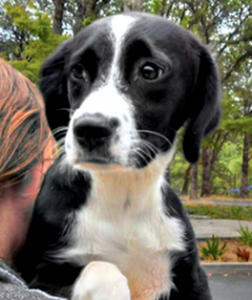By Annie Fox
**Editor’s note – These tips are applicable to teachers too, as educators face the challenges of teaching kindness in K-12 classrooms**
Kids and teens can view of themselves as powerless in a world where adults call all the shots. But that’s not the whole story. Kids have power. And every day, your children and mine get opportunities to use that power to do good or to do harm. Sometimes, turning a blind eye and choosing to do nothing results in more harm.
If we truly value kindness and appreciate it when it comes our way, we can’t ignore suffering. We’ve got to do our part to keep kindness alive… every chance we ge t. And we’ve got to teach our kids to be kind. But how?
t. And we’ve got to teach our kids to be kind. But how?
Child or adult, it takes extra social courage to exit our comfort zone and to help a vulnerable person. When kids ask me about standing up for someone who is being harassed, I tell them they should never put themselves directly in harm’s way. But I make it clear that there are many ways to help an underdog and let him or her know: “I’m not like the others who are giving you a hard time. I’m here to help.”
Fuel for Thought (for adults) —At different times we have all been underdog, top dog, and middle of the pack dog, so we know what it feels in each of those places. Being on the bottom, without support, can be terribly lonely. Think about a time when you felt like an underdog. Where did you turn for support? What response did you get? Think of a time when you helped an underdog. What happened?
Conversations That Count (with kids)– Talk about the concept of a “pecking order” among animals and humans. Say this to your children: “Most of the time, when we’re not on the bottom, we don’t give much thought to those who are.” Now ask your kids what they think about that. True? Not true? How do you know? Talk about who is “on the bottom” in your child’s class. (Even kids as young as second or third grade have a keen awareness of social strata.) How do other people treat that child? How do you treat that child? What might happen if you stood up for the underdog?
Teach—Challenge your child to be a hero and shake up the social strata at school by standing up for someone who needs a friend. Follow up and find out from your child what happened with the challenge.
Please let me know how you teach your kids and students about the importance of standing up for the underdog.
_____
Annie Fox is an internationally respected parenting expert and family coach who empowers parents with the special support, leadership skills, and practical tools needed during our children’s tween and teen years. Her books include The Girls’ Q&A Book on Friendship and Teaching Kids to Be Good People.



Unfortunately, being “cool” or “popular” is something most students yearn for. I think that parents can encourage their students to act kindly towards and help the underdogs, but I think it’s hard for young minds to act the way they know they should.
I wish more students would stick up for the underdog- maybe doing so could even eliminate underdogs! Realistically, there will always be different social groups. Parents and teachers need to lead by example and demonstrate inclusiveness.
This is something I fear so much as a mother. I fear being the mom of a child who is the underdog, but I equally fear that my child could be on who doesn’t help out the underdog.
I love this! What great suggestions. They really made ME, an ADULT, stop and think too. Thanks Annie. From, Annie